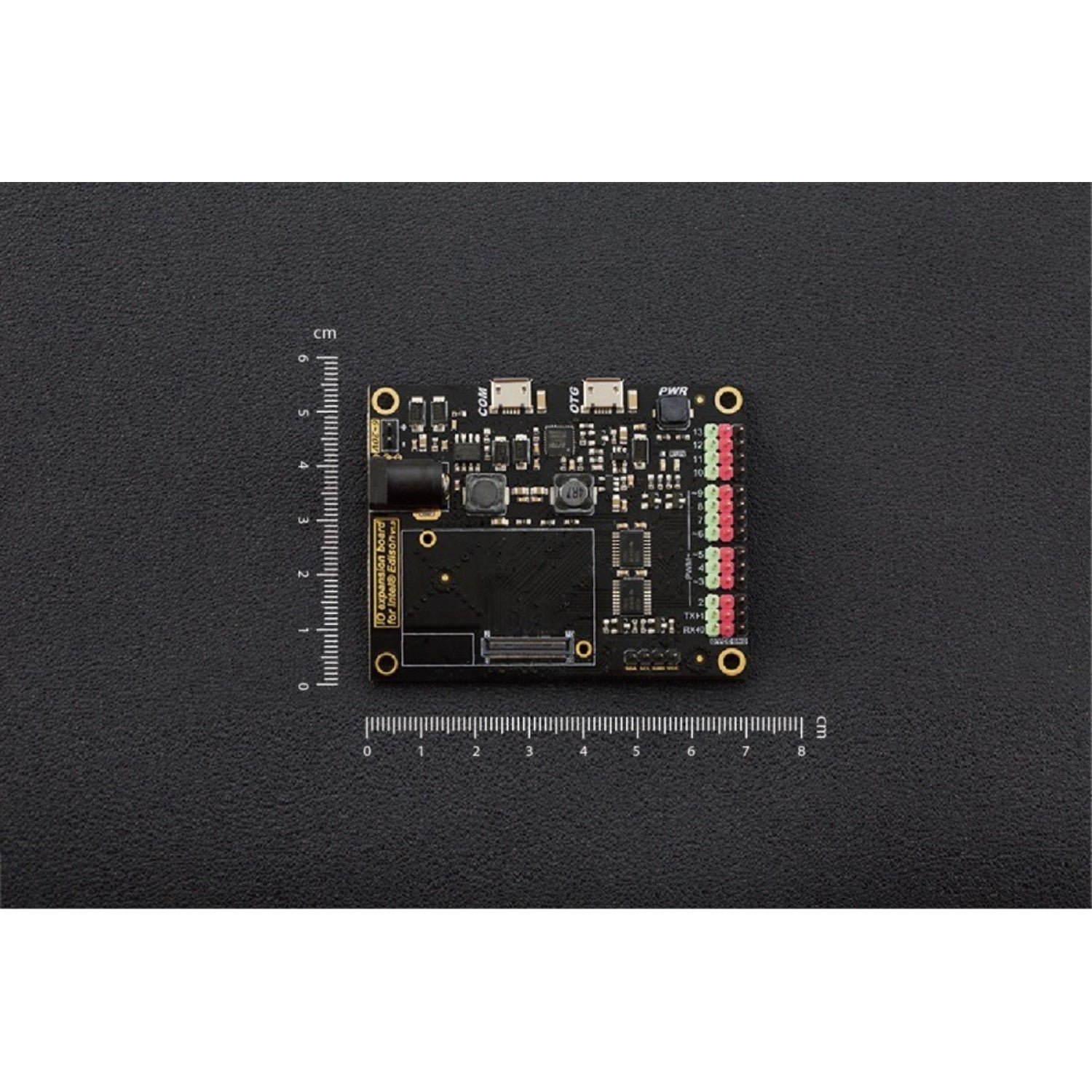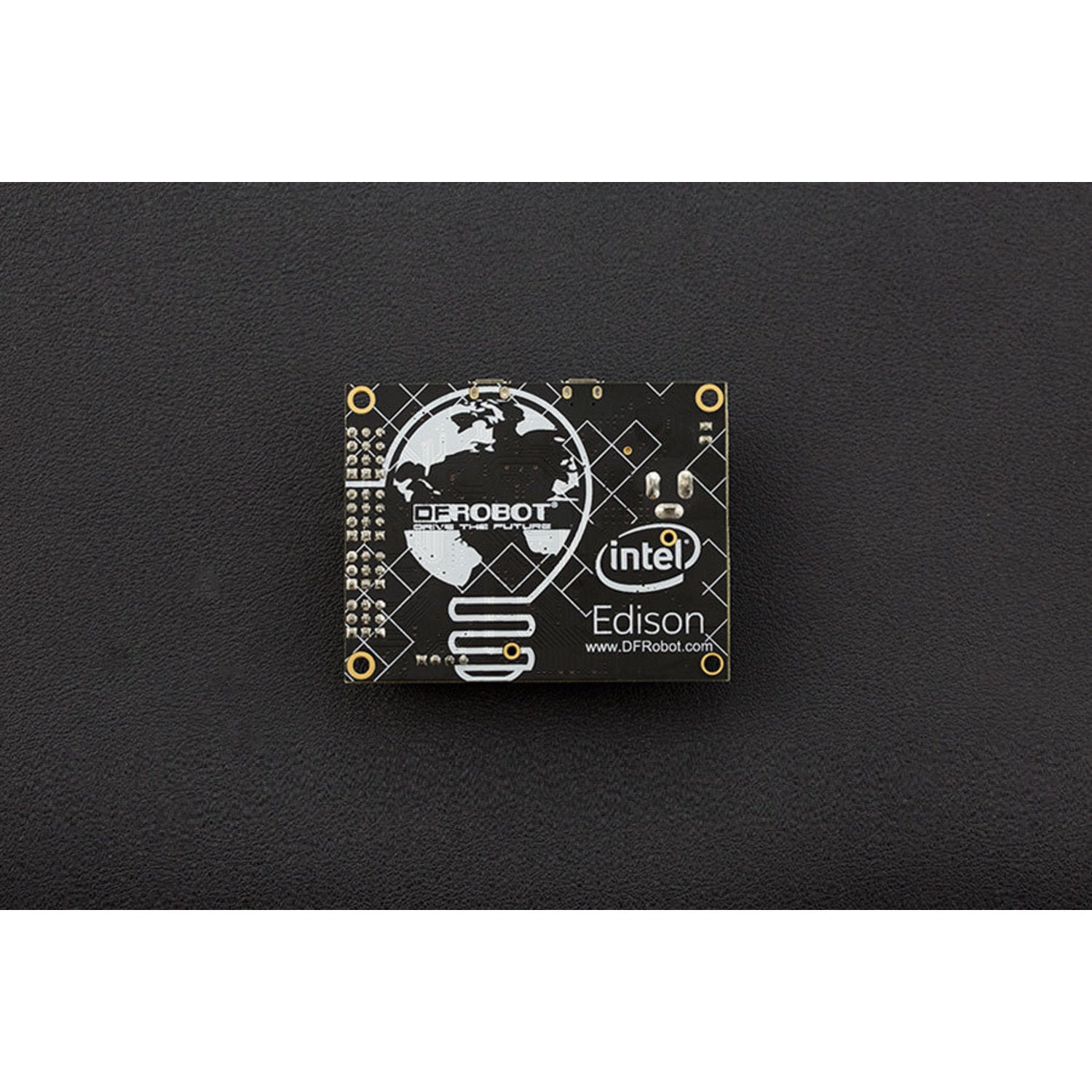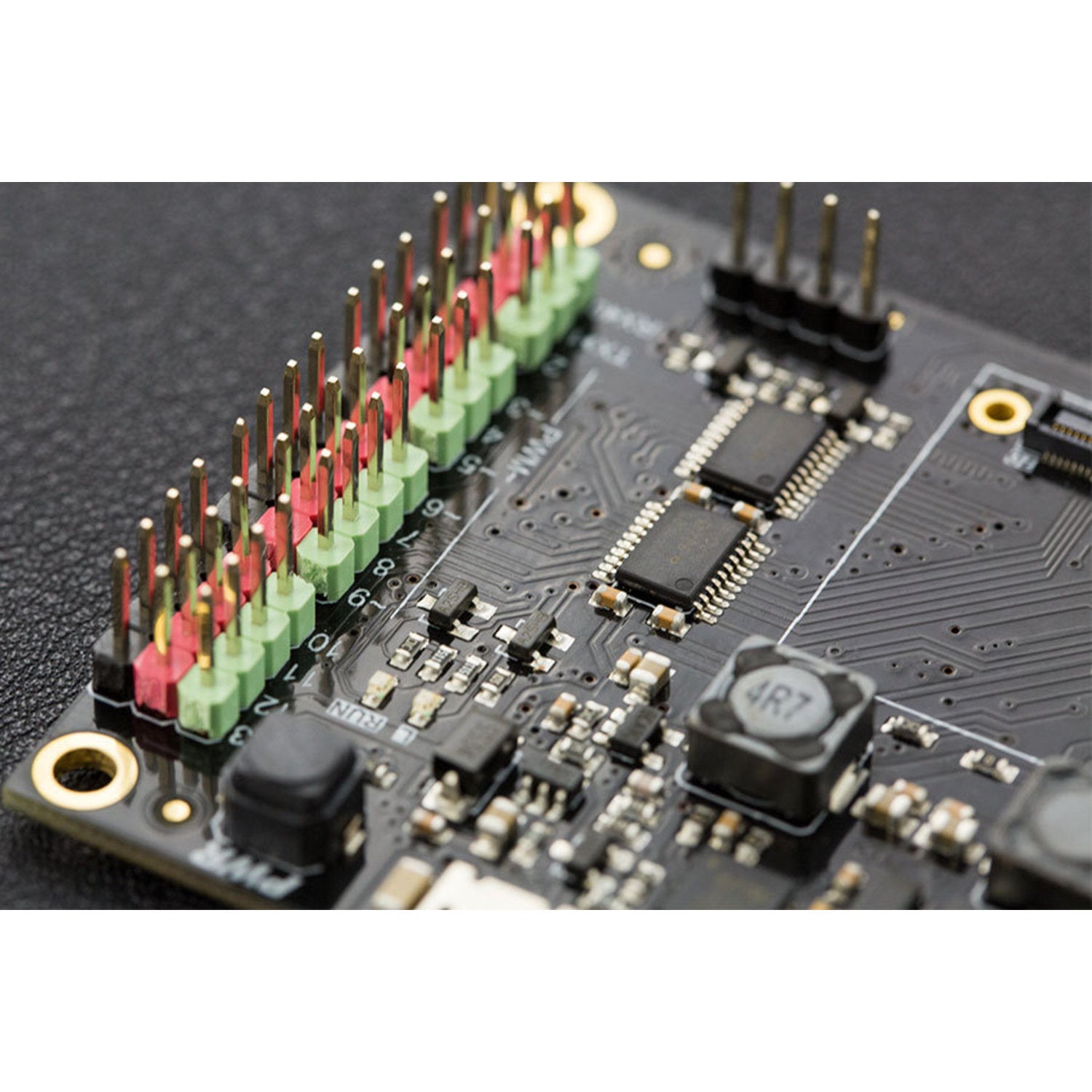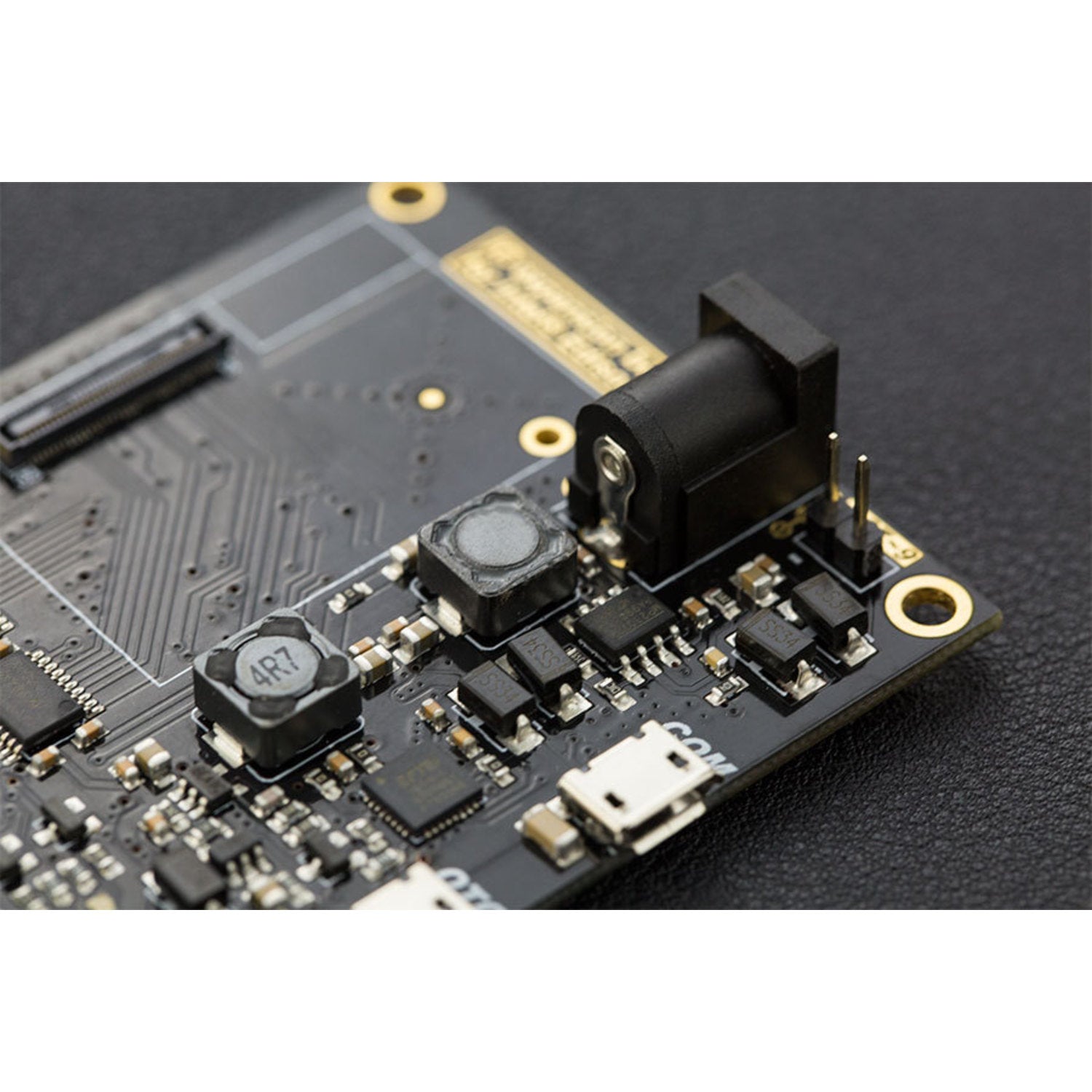The IO Expansion Shield is a top - choice in the market. It makes fast and cost - effective robotics prototyping a breeze. Soldering and wiring issues, such as bridged connections and component breakage, can be time - consuming and expensive. This shield extends the powerful capabilities of the Intel Edison to sense the physical world and enables interaction via wireless communication. Compatible with the Arduino open - source platform and Linux, it supports Java and C development environments. It can also serve as a standalone communication platform for software like flash, processing, Max/MSP, and VVVV. The shield uses DFRobot's classic color - coding for sensor/actuator input/output. The 3 - pin format for Signal, Voltage, and Ground is very intuitive, especially when used with our wide range of compatible modules, sensors, and devices. Specifications include an operating voltage of 5V, an output voltage of 5V, an input voltage range of 6 - 20V, 14 digital I/O pins (D0 - D13), 4 PWM output interfaces (D3, D5, D6, and D9), a DC current per I/O pin of 10mA, dimensions of 70x55x15mm (2.76x2.17x0.59'), and a weight of 30g. It supports USB and external power supply switching, has 1 I2C interface, and supports Broadcom 43340 802.11 a/b/g/n dual - band (2.4G and 5GHz) WiFi and Bluetooth 4.0. Documents available are Product Wiki, Schematic, Intel Edison Getting Started Tutorial, Edison Related Software Download, Edison Firmware Update Tutorial, Build Your Own Edison System Image Tutorial, Intel Edison Introduction, Edison Module Introduction Webpage, and Edison Development Forum. The shipping list includes 1 IO Expansion Shield for Edison (without Edison).




Using the IO Expansion Shield for your Intel Edison is straightforward. First, make sure your power source is within the input voltage range of 6 - 20V. You can choose to power it via USB or an external power supply. Connect your sensors and actuators to the shield using the 3 - pin format, which is color - coded for easy identification. The shield is compatible with Arduino and Linux, so you can use Java or C to start your development. For wireless communication, it supports both WiFi and Bluetooth. When using the shield, avoid overloading the I/O pins with more than 10mA of DC current. Keep it in a dry and clean place to prevent damage. If you need to update the firmware, follow the Edison Firmware Update Tutorial. Also, refer to the Product Wiki and other available documents for more detailed information and troubleshooting.







